
Morbus Morbihan L71.8
Morbihan, M.. Large red smooth spot, homogeneously affecting the whole face, chronically stationary, blurredly limited, sometimes accompanied by a feeling of tension; alternating intense redness; recurrent swelling of the eyelids.
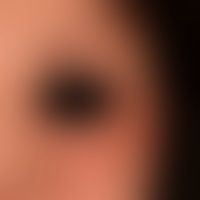
Airborne contact dermatitis L23.8
Airborne Contact Dermatitis: chronic (>6 weeks) extensive, enormously itchy and burning eczema with irregular, extensive infestation of the exposed facial areas including the eyelids.

Seborrheic dermatitis of adults L21.9
Dermatitis, seborrhoeic: Multiple, chronically stationary, centrofacially localized (also on eyebrows and in the beard area), almost symmetrical, blurred, at times slightly itchy, red, rough, finely scaled spots and plaques on the face of a 32-year-old HIV-infected person.
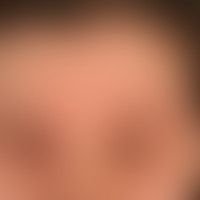
Seborrheic dermatitis of adults L21.9
Dermatitis, seborrhoeic: chronically recurrent disease with constant, blurred, sometimes slightly itchy, red spots and plaques; distinctly bds. eyelid eczema

Cherry angioma D18.01
angioma, senile. 7 mm large lump on the cheek of a 70-year-old patient, existing for years, reddish-brown, very soft, almost completely compressible by finger pressure. skin clearly light-damaged; above left numerous linear telangiectasias. therapy not necessary; if necessary excision without safety distance.

Psoriasis seborrhoic type L40.8
Psoriasis seborrhoeic type: for several months constant location, sharply defined, therapy-resistant, only slightly elevated, homogeneously filled red-yellow, slightly accentuated, scaly plaques at the edges; eyelid homogeneously affected.

Seborrheic dermatitis of adults L21.9
Dermatitis, seborrhoeic: Detailed view: Coarse lamellar scaling, erythematous plaques.

Acne (overview) L70.0
Acne papulopustulosa: disseminated follicular inflammatory and non-inflammatory papules, pustules and retracted scars; recurrent course.
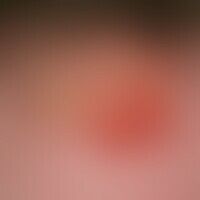
Cryptococcosis B45.9
Cryptococcosis of the skin: Crusty plaque of approx. 3 x 3 cm in size surroundedby a reddish, slightly raised rim in the middle of the forehead of a 37-year-old HIV-infected person (not set to HAART at the time of presentation).

Drug effect adverse drug reactions (overview) L27.0

Keratosis pilaris Q82.8
keratosis pilaris syndrome. keratosis pilaris syndrome with ulerythema ophryogenes. small, follicularly bounded hyperkeratoses in the area of the lateral eyebrows, the forehead-hairline and in the cheek area. erythema in the area of the eyebrows with hair loss and without scaling. sometimes slight itching.

Tinea faciei B35.06
Tinea faciei. multiple, chronically active, since 4 weeks flatly growing, disseminated, 0.5-3.0 cm large, blurred, itchy, red, rough (scaling) papules and plaques as well as few yellowish crusts

Zoster in the trigeminal region B02.8
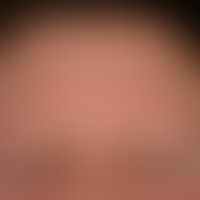
Ulerythema ophryogenes L66.4
Ulerythema ophryogenes. extensive erythema with (scarred) raeration of the eyebrows. symmetrical pattern of infection.

Lupus erythematosus acute-cutaneous L93.1
Lupus erythematosus acute-cutaneous: symmetrical red spots, patches and plaques in the face, neck and upper trunk areas that have been present for several weeks.

Acne excoriée L70.8
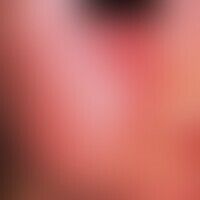
Erythema infectiosum B08.30
Erythema infectiosum: Intense, extensive, butterfly-shaped redness and swelling of the cheeks, accompanied by swelling of the cervical lymph nodes.
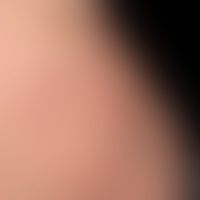
Mycosis fungoid tumor stage C84.0
Mycosis fungoides tumor stage: Mycosis fungoides has been known for many years, and for several months there has been a continuous occurrence of plaques and nodules on the face and upper extremity.

Chronic actinic dermatitis (overview) L57.1
Dermatitis chronic actinic. detail enlargement: Disseminated, scratched papules and nodules as well as blurred, large-area, red, sharply itching fine-lamellar scaling spots and plaques in the face of a 51-year-old female patient with atopic eczema existing since birth.





